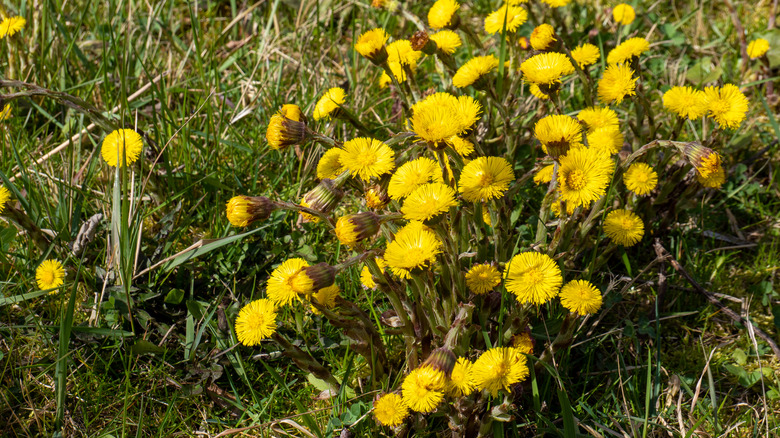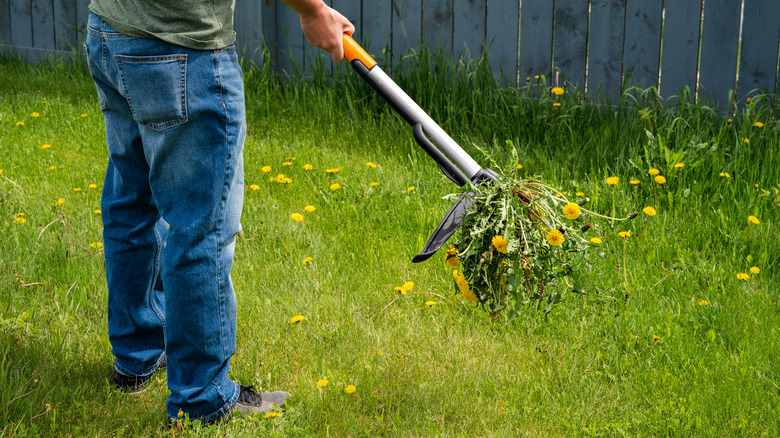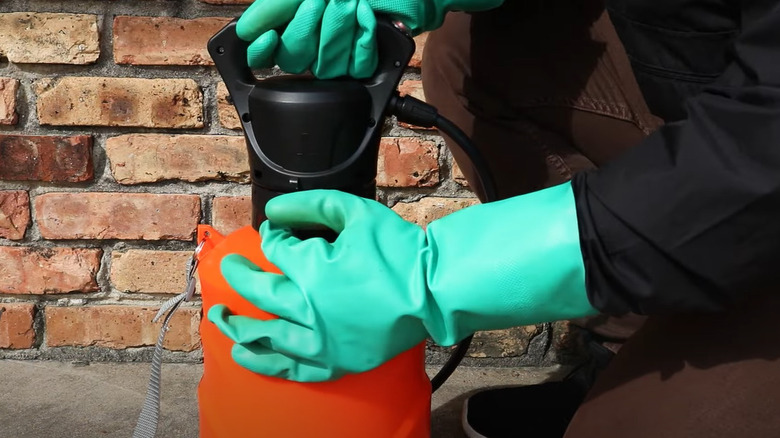Coltsfoot: Tips To Eliminate The Invasive Dandelion Lookalike From Your Yard
We may receive a commission on purchases made from links.
Have you got a weed in your yard strutting its stuff with bright yellow blooms? It might be more than just eye candy. If this plant resembles dandelions, but its flowers are perched on scaly stems rather than smooth ones, you've got coltsfoot. A perennial adorned with big, heart-shaped leaves, coltsfoot has been used to help ease respiratory conditions. But, despite the medicinal benefits, the plant is still bad news for gardeners, given its knack for muscling out other plants for nutrients, space, and moisture. So, how do you get rid of coltsfoot before it takes over your yard? Well, for a few invaders here and there, physical weed control techniques like uprooting usually do the trick. However, a chemical approach could be your saving grace for extensive invasion.
Don't underestimate coltsfoot. Its crafty survival game consists of popping out a barrage of seeds that can travel far and wide and stay viable for germination for two to three months. Not to mention, its rhizomes can stretch out up to 18 feet. Leave them unchecked; your garden could be a coltsfoot kingdom in no time. And remember, coltsfoot roots burrow deep into the soil (up to 5 feet). Yank them carelessly, and you might as well roll out the red carpet for the grand return. Turning the tide in your favor boils down to picking the right techniques for the invasion level in your garden.
Physical control of coltsfoot
Uprooting is your first line of defense against coltsfoot. However, haphazardly pulling them out is a common weeding mistake you want to avoid. You see, the rhizome bits have a knack for sprouting into new trouble spots. So, when you've got a few coltsfoots poking out, that's your moment to yank them out. Timing before the weed produces seeds is key to minimizing chances of future growth. And if the sprouts haven't sent out rhizomes, that's golden. Moist soil is your best friend when pulling out weeds. So, water the affected area beforehand.
Given the brittleness of coltsfoot rhizomes, hand-pulling might not cut it. A specially designed tool like the Fiskars Stand Up Claw Garden Weeder, available for $49.45 at The Home Depot, comes in handy here. Such a tool is built to latch on the weeds and their taproot, making it easy to get them out. Be thorough when digging out coltsfoot, though, as any leftover roots are sure to stage a comeback, then discard the weed parts in a trash bag.
When you are up to relatively extended patches of coltsfoot, occultation, especially in the summer heat, might just be the trick. This involves laying a thick and heavy black plastic sheet on the weedy area, with the edges anchored with heavy items like stones, bricks, or sandbags. For four to six weeks, the summer heat will crank up the heat under the tarp and prevent water access, creating parchedness that coltsfoot can't handle.
How to get rid of coltsfoot using chemicals
Chemical control will suffice for medium to large coltsfoot infestations. But whichever herbicide you choose, ensure it's formulated for broad-leaf plants. For areas deserving a fresh start, where it's okay to wipe out every plant (coltsfoot included), non-selective types of weed killers like glyphosate and imazapyr are your go-to. A heads-up: Should there be plants you want to keep around the target area, cover them with plastic sheeting or cardboard to protect against stray herbicide mist.
And if you want to spare grass and other desirable plants in the coltsfoot-infested area? Well, you've got selective options like triclopyr, aminopyralid, and clopyralid. An example of a triclopyr-laced herbicide for coltsfoot would be the Garlon 4 Ultra Herbicide ($305 on DoMyOwn). Always consult the manufacturer's instructions before conjuring your herbicidal potion. A good tip for better adherence on the leaves is to mix in a non-ionic surfactant, like the Southern Ag Surfactant for Herbicides ($13 on Amazon).
So, when is the best time to spray? Summer, when the coltsfoot leaves are fully out, is your best bet. Remember, those chemicals don't play nice with human bodies. So, suit up in appropriate PPE. Depending on how much ground you're covering, you could use a spray bottle, backpack sprayer, or tank sprayer. Aim for a thorough coat on the leaves, but avoid drenching to the point of liquid dripping off. Lastly, pick a calm day for spraying coltsfoot to prevent collateral damage from wind-induced herbicide drifts.


